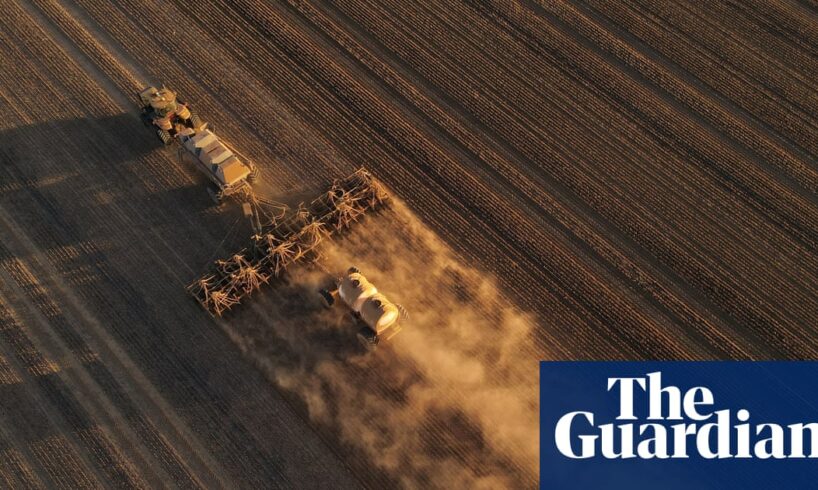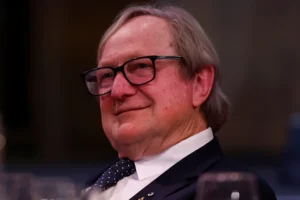
Last September, a leaked email revealed the National Farmers’ Federation had directed members to stay silent about the putative health risks from paraquat, a widely used herbicide. Some farmers rebelled. Among them was Mirboo North grower and grazier Emma Germano, who was then the president of the Victorian Farmers Federation.
Germano broke ranks with the NFF to support the farmers who’d been vilified for speaking out about clusters of Parkinson’s disease, which they believed to be linked to paraquat use on farms. (Manufacturer Syngenta, which has partnerships with NFF, denies any link.)
“These people are suffering,” Germano told the ABC’s AM program. “They’re asking a question. For that to be shut down, when these are people who have been diligently part of our industry, salt-of-the-earth farmers – that, to me, is inexcusable.”
Germano’s stance revealed a growing discontent with peak bodies in Australia’s fragmented agriculture sector.
Some farmers believe peak bodies advocate for agribusiness interests over those of grassroots farmers. In niche and nascent sectors especially, farmers say they don’t feel represented by Australia’s 50 farming organisations, which range from regulators and statutory bodies to commodity groups, industry associations and farmers federations. The latter have faced declining memberships for decades.
Andrew Meseha, whose companies grow hemp in Deniliquin, Shepparton and South Gippsland, says farm bodies cannot advocate for farmers while sponsored by corporations and aligned with specific political parties. “The chemical companies are in every pocket,” he says.
Meseha believes consequent farmer discontent accounts for the rising influence of independent rural MPs and the advent of non-partisan, issue-based collectives such as Lock the Gate and Farmers for Climate Action (FCA).
Founded in 2010, Lock the Gate says it has 120,000 supporters, and decade-old FCA claims it has 45,000 supporters and more than 8,400 members. By comparison, state federations and associations – some more than a century old with huge legacy capital – report membership bases from about 3,500 in Western Australia and about 19,000 in New South Wales. The NFF accepts only organisational members – a structure Germano says privileges “special interests, factions and commodity groups”, and generates “a huge amount of overlap” with state federations. “It’s a pyramid scheme without the Tupperware,” she says.
The NFF president, David Jochinke, who was previously the president of the VFF, says the structure of agricultural organisations has been “a topic of discussion for decades” and should continue to be so “to make sure we have the best system to ensure agriculture and farmers are heard”.
“We recognise that the agricultural landscape is changing, and with it the expectations of how peak bodies engage, advocate and represent grassroots voices,” he says.
They need to ask: do we stand for farmers or do we stand for agribusiness?Emma Germano
This week, the NFF chief executive, Troy Williams, resigned after three months in the job, citing “personal reasons”.
Consumed with infighting, the VFF lost about 400 members in the year before the paraquat showdown – partly attributable to corporatisation and mergers of farms. Farm sizes have swelled, meaning fewer individual farmers to represent, with the number of Australian broadacre and dairy farms declining by a third in the last 25 years. Increasing automation has also reduced the sector’s workforce – a dragnet of occupations that includes pickers and processors, as well as fishing and forestry labourers – to only 2.1% of Australia’s working population, represented largely by unions, not peak farm bodies.
Farmers – a famously individualistic sector – don’t tend to collectively organise in union style. But first-generation farmers are increasingly looking to “collective action solutions that peak bodies could embrace”, says horticulturist and “agvocate” Lisa Brassington. These bodies could “depoliticise the messages and reach out to the commons”, she says.
Politicking by farm bodies can stoke populist myths about urban-rural divides, with the “latte line” and “quinoa belt” rhetoric sometimes deployed, but Brassington says fire and flood relief donors are largely “from urban and township postcodes”, showing broad solidarity and goodwill. “Natural and financial crises create a loss of autonomy” for farmers and peak bodies “have a time-sensitive role” to support “collective interests”, she says.
Claiming to amplify the voices of farmers, aspiring social media influencers such as FOALS (Future of Agricultural Leadership) are emerging. Agricultural influencers are also a growth industry.
But many influencers reiterate divisive messaging and can’t effectively advocate because they don’t have the established bodies’ governance structures and transparency obligations, says Brassington. Furthermore, issues for farmers remain mostly “similar to previous generations – drought, flood, roads, labour, supply chains, and profit margins”, alongside “succession planning, affording technology and water rights” and mental health. Much advocacy for the latter is carried by charities such as Farm Angels and Rural Doctors Foundation, and university research outfits such as AgHealth.
skip past newsletter promotion
Sign up to The Rural Network
Subscribe to Calla Wahlquist’s fortnightly update on Australian rural and regional affairs
Privacy Notice: Newsletters may contain info about charities, online ads, and content funded by outside parties. For more information see our Privacy Policy. We use Google reCaptcha to protect our website and the Google Privacy Policy and Terms of Service apply.
after newsletter promotion
Germano believes farm bodies need to modernise and reform their profligate cultures if they want to retain grassroots members. “Peak state organisations mirror National party branches from long ago, when they served men from the landed gentry,” she says.
A third of Australia’s farmers are now women, yet women “can’t step outside the status quo” inside federations, she says. “They’re still old boys’ clubs.”
Jochinke says the NFF’s national advocacy model is “proudly member-driven and we are actively working with our member organisations to shape a modernised, effective approach”.
Germano led the VFF’s split from the NFF in September, after the NFF didn’t consult with Victorian sheep farmers before staging a Coalition-partnered Canberra rally against the phase-out of live exports.
She believes such tactics are undemocratic and outdated – promoting myths that farmers are indifferent to animal welfare and “that the big war is against animal activists”. “The live sheep ban was advocated most strongly by meatworkers unions who wanted meat locally processed,” she says. Negotiating with diverse interest groups achieves better policy outcomes for farmers and the broader community.
To advocate effectively, farm bodies need “better governance, independence and listening – discipline, culture, restructure”, says Germano.
“They need to ask: do we stand for farmers or do we stand for agribusiness? These are different things and are often at cross purposes.”
Jochinke says the NFF “reject the notion that peak bodies prioritise agribusiness over grassroots concerns”.
“Our recent work, such as opposing the biosecurity levy, securing bipartisan support for a national food security plan, and advocating for fair environmental and tax policies, demonstrates our commitment to representing the interests of everyday farmers.”





